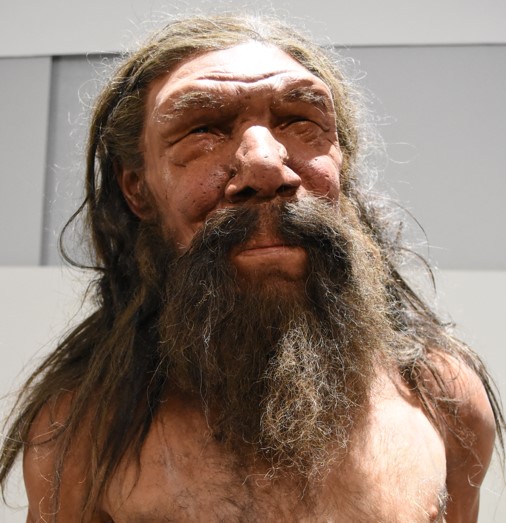Deep within a cave in southern Italy, a strangely atypical Neanderthal man has been stuck upside down for around 150,000 years. Named Altamura Man, this remarkable skeleton represents one of the most spectacular human fossils ever discovered and could help to clear up some of the mysteries surrounding our evolution as a species – if only we could get the old bloke out.
The inverted skull of this peculiar specimen was first spotted poking out of a wall within the Lamalunga karstic system, near Altamura, in 1993. Straight away, researchers were struck by the skeleton’s unusual orientation and gnarly appearance, caused by the accumulation of calcite blobs – otherwise known as “cave popcorn” – upon the surface of the cranium.
Unfortunately, however, the bones have completely fused with the surrounding rock, leaving Altamura Man sealed within his natural tomb. Summarizing the ancient hominid’s frustrating predicament, the authors of a new paper explain that the skeleton “still lies deep within a spectacular cave setting, partly embedded within speleothems and extensively covered by coralloid concretions.”
“These peculiar location and conditions would entail major difficulties in excavating and preserving ex-situ this skeleton,” they add. Powerless to get their man out of his speleo-prison and into a lab, researchers were unable to study this intriguing individual for several decades, although uranium-thorium dating did reveal that he was between 130,000 and 172,000 years old.
By 2015, scientists had finally succeeded in retrieving a few fragments of the skeleton’s shoulder blade for DNA analysis, confirming that Altamura Man was indeed a Neanderthal. To gain more information, the authors of the new study spent the following four years conducting research within the cave itself, using portable X-ray machines, high-resolution endoscopic cameras, and miniature laser scanners that could fit through tiny openings in the rock wall.
The combined results of these studies revealed that Altamura Man was a “fully adult Neanderthal who suffered some rather common dental pathologies,” leaving him with several teeth missing. More significantly, however, a digital reconstruction of the skull demonstrated that the skeleton possessed a number of morphological features that had never previously been seen in “classic Neanderthals”.
A reconstruction of Altamura Man’s face.
Image credit: Roberto Montanari/Shutterstock.com
For instance, the skull bore similarities to that of an older hominid that lived in a Spanish cave around 430,000 years ago, and which has been classified as an early type of Neanderthal. In other ways, however, Altamura Man was more akin to other members of his species.
Based on this mish-mash of characteristics, researchers believe Altamura Man probably belonged to an isolated population of Italian Neanderthals that evolved separately from those elsewhere in Eurasia, and which preserved some of its more archaic traits for an exceptionally long time.
Speaking of exceptionally long times, it’s thought that this particular individual probably died after falling into a sinkhole and getting stuck in a crevice, where he has remained ever since – and is likely to stay forever more.
The study is published in the journal Quaternary Science Reviews.
Source Link: The Most Complete Neanderthal Skeleton Ever Found Still Can't Be Excavated
